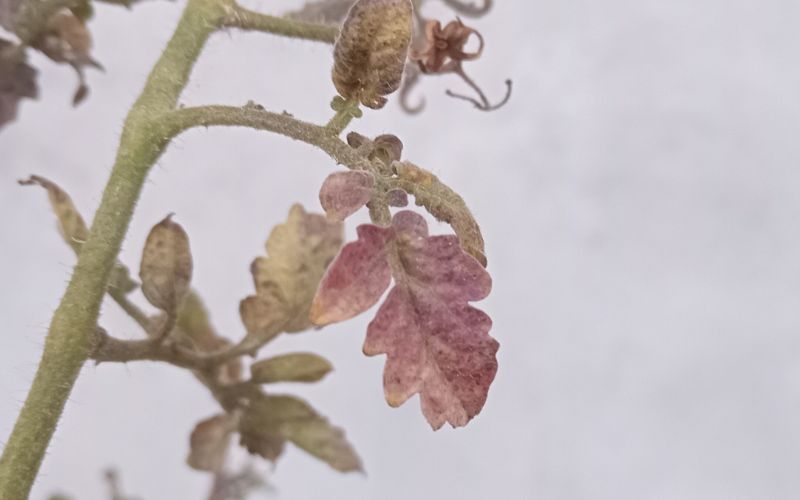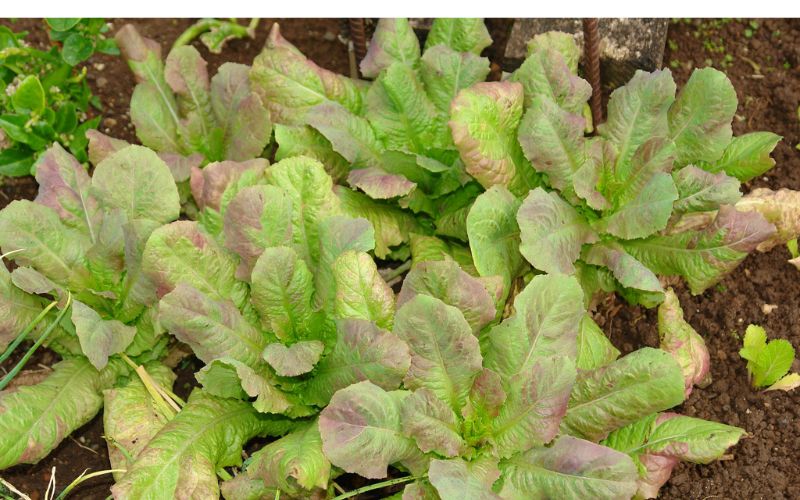Phosphorus plays a crucial role in the growth and development of plants. It is essential for photosynthesis, root development, flowering and fruiting, and disease resistance. Phosphorus helps to provide energy for root growth, strengthens the walls of plant cells, and stimulates the production of defense-related compounds, all of which contribute to plant health and vitality. A deficiency in phosphorus can significantly impact plant growth and productivity.
More about what phosphorus does for plants
What are the signs of phosphorus deficiency in plants?
A lack of phosphorus in plants can produce various signs and symptoms, including:
- Purple or reddish leaves: Plants that lack phosphorus may show a purplish or reddish tint on their leaves, particularly on the undersides of the leaves. This is because phosphorus is essential for the production of chlorophyll, which gives plants its green color.

- Slow or stunted growth: Phosphorus plays an essential role in the growth and development of plant cells. Without enough phosphorus, plants may grow slowly or not at all.
- Small, underdeveloped roots: Phosphorus is vital for the growth and development of roots. Plants that are deficient in phosphorus may have small, underdeveloped roots, which can lead to reduced nutrient uptake and affect overall plant health.
- Delayed maturity: Plants with phosphorus deficiency may take longer to mature and produce flowers or fruits.
- Reduced yield: Phosphorus deficiency can lead to reduced crop yields, particularly in plants that produce fruits or seeds.
- Poor quality fruits or seeds: Plants with phosphorus deficiency may produce fruits or seeds that are smaller, less flavorful, or have a lower nutritional value.
How to treat phosphorus deficiency in plants
Looking for early signs of phosphorus deficiency and starting to treat it as soon as possible is important to prevent diseases and pests from attacking the plant and spreading.
- Add phosphorus-rich organic amendments to your soil
The first step in solving phosphorus deficiency is to increase the amount of phosphorus available to your plants. You can do this by adding phosphorus-rich organic amendments given below.
The phosphorus content in each type of organic fertilizer in terms of the total weight is indicated in brackets. This content indicates the total amount of phosphorus but all of it may not be immediately available in a form that plants can take up.
Compost (0.5–1% phosphorus)
Fish bone meal (35.8% phosphorus)
Rock phosphate (up to 30% phosphorus)
Bone meal (15% phosphorus)
Guano (6% phosphorus)
Worm castings (1.5-2.3% phosphorus)
Blood meal (1% phosphorus)
Seaweed (0.2-1.3% phosphorus)
Wood ash (1.5-2% phosphorus)
Soybean meal (0.6% phosphorus)
- Neutralize soil pH
Soils with a pH that is too high (alkaline) or too low (acidic) can lead to poor phosphorus uptake by plants.
Acidic soils with a low soil pH tend to have high levels of aluminum and iron, which can form insoluble complexes with phosphorus, making it difficult for plant roots to take up phosphorus from the soil.
Conversely, in alkaline soils with a high pH, phosphorus reacts with calcium, magnesium, other minerals, and carbonates in the soil to form insoluble compounds, which are unavailable for plant uptake.
Testing your soil and amending it accordingly can help phosphorus uptake. Adding compost can both neutralize your soil and add more phosphorus and a balance of other nutrients.
- Increase soil health
Soil that is low in organic matter or depleted of nutrients can also lead to phosphorus deficiency in plants. As your plants grow they will absorb more and more phosphorus from the soil, so it’s necessary to regularly add some compost to fertilize your soil as your plants grow.
In addition, soils that are unhealthy have lower levels of microorganisms, which are useful for breaking down phosphorus compounds into a form that’s more easily taken up by plants.
Adding organic amendments that are rich in phosphorus can increase the amount of phosphorus in the soil. Along with these amendments, you should add compost, which will increase the number of microorganisms to help make the phosphorus more accessible to your plants.
- Stop overusing nitrogen fertilizers
Using too much nitrogen fertilizer can lead to an imbalance of nutrients in the soil, which can make it harder for plants to absorb phosphorus. Instead of adding other amendments, add more compost, which has a balance of all nutrients, releases them slowly into the soil, and contains microbes that can break down other fertilizers as well.
- Start new plants each season
Although vegetable plants like tomatoes will keep producing for 2-3 years, as long as they don’t encounter freezing temperatures, it’s best to start new plants each season. Newer plants will be stronger and will be better at taking up nutrients, so will be less affected by any nutrient deficiencies.
- Rotate your plants
Growing the same type of plant in the same area of the garden can over the years lead to nutrient deficiencies. To avoid this, you can plant a different type of vegetable herb in a certain area of your garden or in each different raised bed each year.
If you are growing your plants in containers after each growing season you should mix fertilizer into your soil before you reuse it. However, you should discard the potting soil if your plants have suffered any soil-bourne pests or diseases.
You can first disinfect your soil. Solarization is a cheap and easy method if your climate is still warm enough. Then you can mix about 1 part of the soil being reused to 1 part mix of compost, coco peat, and other nutrient-rich soil amendments before planting.
In conclusion, phosphorus is an essential nutrient for the growth and development of plants. A deficiency in phosphorus can lead to several signs and symptoms, including slow growth, small roots, delayed maturity, reduced yields, and poor-quality fruits or seeds. To treat phosphorus deficiency, you can add phosphorus-rich organic amendments to the soil, neutralize soil pH, increase soil health, avoid overusing nitrogen fertilizers, start new plants each season, and rotate your plants. By taking these steps, you can ensure that your plants get the phosphorus they need to grow strong and healthy.

